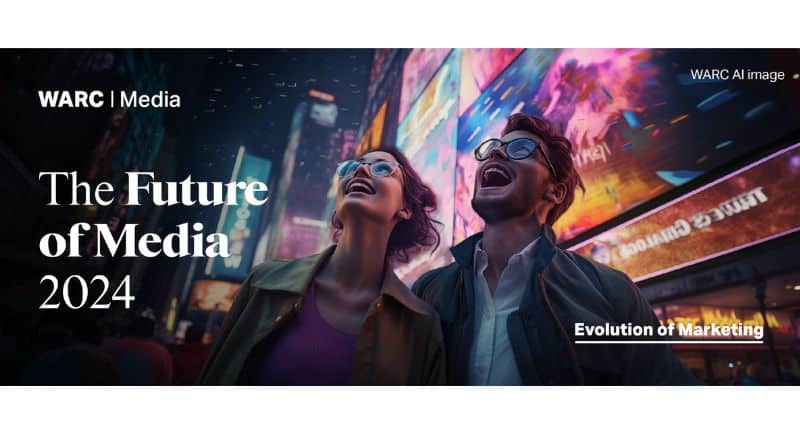The WARC Future of Media 2024 report has forecast Alibaba, Alphabet, Amazon, Bytedance and Meta is set to attract over half (51.9%) of global advertising spend this year as their ad revenues rise by 10.7%.
The report predicts that this year, global advertising spending is expected to top $1 trillion for the first time. Central to this growth is the continuing adoption of AI, but its rise highlights challenging questions about media quality and the future of advertising on the open internet.
Paul Stringer, WARC’s managing editor of Research & Insights, noted that as marketing budgets “rebound” in 2024 there is uncertainty on where best to direct investments in media, the role of AI in planning, and how to assess media quality.
“And as politics temporarily engulf culture with impending elections in several major economies, and the threat of low-quality AI generated content looms large, media environments that can offer suitable guarantees around brand safety will take on extra value.
“With this report we aim to provide insights and data enabling marketers to be better equipped to make informed decisions and plan for success in the year ahead,” Stringer added.
Key trends outlined in The Future of Media 2024 report are:
• AI-based advertising solutions grow but force advertisers into trade-offs
Walled garden platforms are expanding their reach and influence in advertising, thanks in part to the adoption of new AI-based capabilities, such as Meta’s Advantage+ and Google’s Performance Max.
While this has generated a fair deal of excitement among advertisers, these trends have also prompted fresh concerns about advertising transparency and increased speculation about the future of advertising on the open web.
For agencies and brands, transparency should be prioritised when working with AI-based tools, AI-generated content is a threat to media quality and brand safety, and brands should take steps to protect their investments in open web advertising.
• Linear TV consumption continues its gradual decline but age matters
Linear TV (broadcast and cable) consumption has been in gradual decline over the last decade, particularly with young audiences. Despite remaining the most trusted medium, there is a sense that this decline has accelerated over the last year.
According to WARC data, global Linear TV ad spend decreased by 5.4% in 2023 and data from WARC’s 2024 Marketer’s Toolkit shows that only 18% of marketers worldwide plan to increase their investment in linear TV this year, while 39% plan to withdraw spend.
However, actual time spent consuming TV only declined on average by 3 minutes daily (2.7%) in 2023. WARC Media forecasts global linear TV consumption to decline by a further 2 minutes per day (1.9%) in 2024, meaning people will continue to spend more time with linear TV than streaming video, streaming music, or listening to podcasts.
Dave Campanelli, Horizon Media’s EVP/chief investment officer, said there is still an audience still watching linear TV, but tend to be older .
“It’s 50% of this whole pie. Our budgets need to represent that, depending on your age segment and who you’re going after.”
• Attention measurement at a crossroads
Brands and agencies are increasingly embracing attention measurement as a means of assessing creative and media quality. But, a lack of common standards and substantial evidence are two potential barriers to attention measurement achieving widespread adoption and legitimacy.
A common criticism of attention measurement is the strong bias towards visual media. The top tools used across all companies are eye tracking (50%), survey-based ad recall (46%), tuning duration/dwell time (42%) and facial coding (42%).
The need to understand how attention works across different media channels and formats is resulting in more research and the building of new models of media quality. Brands and agencies should scrutinise vendor tools and methods, conduct their own experiments into attention to determine its value to their advertising, and prove the business effects of attention.
Karen Nelson-Field, Amplified Intelligence’s founder and CEO, said the industry needs more robust evidence for attention measurement to convince CFOs and procurement teams low-cost media doesn’t necessarily equate to efficiency.
“When we focus on business effects and align with the goals of CFOs, the industry as a whole will benefit.”
• The growth of in-game advertising
With a global audience of over 3 billion, gaming has developed into one of the most popular and pervasive forms of entertainment in the world, but remains a largely untapped opportunity for brands. Research by IAB estimates that gaming accounts for 5% of advertiser budgets.
Offering increasing amounts of ad inventory and a highly engaged and diverse audience, there are shifts taking place across the wider gaming industry that signal the potential for further growth:
(1) major acquisitions such as Microsoft’s $69bn purchase of Activision and Sony’s purchase of Bungie and Savage Game Studios; (2) the continual leveraging of gaming IP in new TV and movie releases; (3) the growth of cloud-based game streaming services; (4) investment from new entrants such as Netflix, Amazon and Bytedance.
PWC estimates that video game advertising revenues will be worth $91 billion in 2024, meaning gaming would be the 5th largest channel by advertising spend, behind search, social media, linear TV and retail media.
